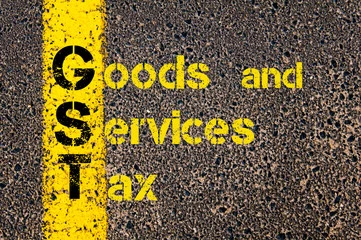Demystifying Goods and Services Tax (GST)
About Course
Goods and Services Tax (GST) was referred to as “good and simple tax” by the Prime Minister of India when it was unveiled in 2017. It is a comprehensive indirect taxation mechanism with an aim to subsume the existing indirect taxes under a common umbrella, comprising taxes on goods and services. The GST Council acts as a recommendatory body with respect to the implementation and levy of the respective taxes under the system of GST.
This course is aimed at providing an overview of the system of GST comprising revenue collection system, status of different goods and services under GST, compensation mechanism, dispute settlement mechanism, significance of supply under GST and an overview of certain important concepts under the GST regime.

In this world nothing is certain, but death and taxes.
Benjamin Franklin- 1. General overview
- 1.1. Introducing GST
- 1.2. GST Unveiling
- 1.3. Envisaging GST as a concept
- 1.4. Types of GST
- 1.5. Exercises
- ☆ Feedback
- 2. Revenue collection under GST
- 2.1. Revenue collection
- 2.2. Revenue collection as a harmonised policy
- 2.3. Exercises
- 3. GST Council
- 3.1. GST Council as a recommendatory body
- 3.2. Exercises
- 4. GST in local governance
- 4.1. Panchayats and Municipalities under GST
- 4.2. Exercises
- 5. GST as a sub-summation of taxes
- 5.1. Sub-summation of taxes
- 5.2. Indirect taxes and goods outside GST
- 5.3. Alcohol under GST
- 5.4. Petroleum under GST
- 5.5. Exercises
- 6. Concept of "supply" under GST
- 6.1. Concept of "supply"
- 6.2. Concept of tariff schedule
- 6.3 Place of "supply"
- 6.4. Exercises
- 7. Important concepts under GST
- 7.1. Valuation
- 7.2. Reverse charge
- 7.3. Input Tax Credit
- 7.4. Zero-rated Supplies
- 7.5. Anti-profiteering
- 7.6. E-way bill
- 7.7. Concept of GSTN
- 7.8. Exercises
- 8. Electronic Commerce Operator
- 8.1. Concept of "Electronic Commerce Operator"
- 8.2. TDS obligation for Electronic Commerce Operator
- 8.3. Exercises
- 9. Dispute resolution under GST regime
- 9.1. Dispute resolution
- 9.2. Exercises
- ☆ Feedback
Why Take This Course?
This course will help you
- Get an overview of the system of GST
- Understand the correlation between GST and the existing taxation system
- Understand different concepts under the GST regime
- Understand the role of the GST Council in relation to policy making
- Analyse the status of different goods and services under GST
- Analyse the significance of supply under GST
- Get practical knowledge of concepts such as Input Tax Credit, Reverse Charge and Zero Profiteering in relation to GST
- Discern the scope for further research in the area of GST
Instructors

Tarun Jain
Advocate, Supreme Court
Tarun has 12+ years of expertise in indirect and direct tax. He has led tax litigation teams at top law firms and teaches Taxation Law at National Law Schools. He authored “Goods and Services Tax: Constitutional Law and Policy” (EBC).
Certificate
Complete this course and exercises to earn a certificate. Share it with your friends, colleagues, and employers.*
*You must Subscribe to get a certificate.

Limit Reached or Trial Expired
You have reached the limit of 2 audit enrollments or your trial period has expired.

